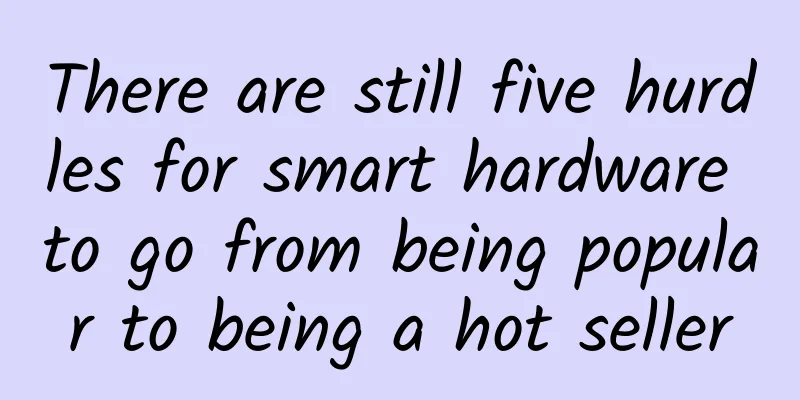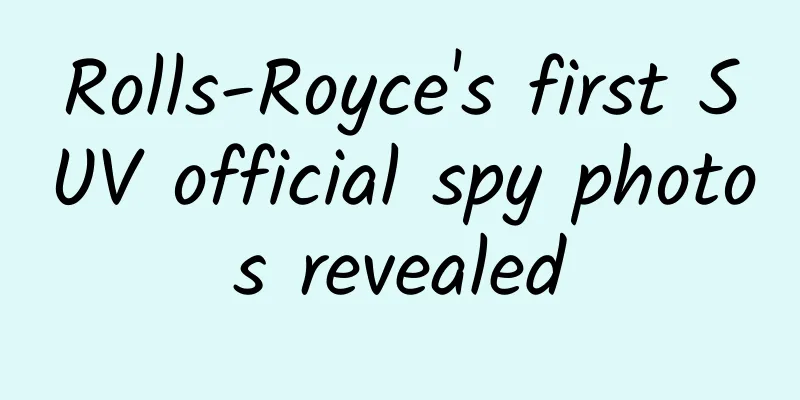There are still five hurdles for smart hardware to go from being popular to being a hot seller

|
On September 20, I was invited to attend an offline salon for smart hardware, where several senior experts from the fields of smart hardware production, R&D, and sales shared their views on the industry and products. Combining the salon sharing and my own understanding, I concluded that there are still five hurdles for smart hardware to go from being popular to being a hot seller. The first is the user demand barrier: users need more than just data, facts, and simple controls, but practical solutions. Current smart hardware products focus more on the product itself and less on user needs. They provide more data to users and less on practical solutions through data analysis. Moreover, the data provided by some products is inaccurate, such as some bracelets. Some products are simply installed with control modules and controlled by mobile phones, etc., and are called smart hardware, such as turning on lights with mobile phones. This is simple and crude and does not solve the real needs of users. Smart hardware should not be the starting point or the end point. It is just a process tool. Through smart hardware, it provides users with life solutions and a new life concept and lifestyle. Therefore, we should not use products for the sake of products or technology for the sake of technology, and we should not bring more information anxiety, more operation troubles and unfamiliarity to users. The right way is to fully understand the needs of users, solve their pain points through products, and help users have a healthy, convenient and comfortable lifestyle without significantly changing their living habits. The second is the product development hurdle: what is needed is not rapid iteration and extreme thinking, but better experience, more scenarios and larger industry space. When creating products with Internet thinking, the concept is often launched early, and the product is often delayed and has many difficulties in mass production. As soon as the product is made, it is copied and copied. Giants occupy the position and monopolize the product development space. There is a strange phenomenon of "many platforms and few products". The rapid iteration and extreme thinking in Internet thinking are not applicable. Due to the high requirements of craftsmanship and quality, the cycle from project establishment to market launch of smart hardware is long, rapid iteration is difficult, and there is also a risk of quality reputation. Product development is based on the grasp of user needs. What users care about is often not the intelligence of one or two functions, but a better experience and enough application scenarios. Even if a product with only monitoring function is done to the extreme, if it does not have the function of adjusting air quality, it does not have much practical value for users. For small entrepreneurs, it is really the best of times and the worst of times. There is enough room for innovation. At the same time, the early layout and positioning of the giants bring small entrepreneurs the following prospects: either die or be acquired. The third is the sales channel: online promotion is easy but sales are difficult, users focus on experience, O2O is a good sales method The current problem is that the sales of smart hardware are often on official websites, or platforms such as JD.com and Tmall, with most sales taking place through online channels and less offline channel development; most of the sales focus is on selling product concepts to users, while fewer users are given actual experiences. Online promotion can easily and quickly cover a large number of people and achieve good results. However, online sales have certain disadvantages. How can users easily buy smart hardware when they don’t know what it does and how it feels? Offline experience is an indispensable part. Therefore, smart hardware sales should consider more business halls of Digital China, Suning, Gome, and even operators. In these 3C and digital stores, it is easier to convert customers into real users through experiential marketing. Therefore, the O2O model of online promotion and offline sales is a better way. When the product reaches a certain sales scale, there will be a certain space for online sales through word-of-mouth communication. Fourth, the profit model hurdle: "Free hardware" raises the industry threshold, and product brands, software and services have not received due recognition. Under the promotion of Internet companies, the concept of "free hardware" has been deeply rooted in people's minds. When seeing smart hardware products, many people make judgments about their value based on their BOM prices, without leaving enough space for the brand. While believing that hardware should have zero profit, they do not fully recognize the value of software and services. Internet companies try to make profits through value-added services such as information and advertising connected behind the hardware, or through user behavior data accumulated by built-in software. However, for some simple products, there is no room for monetization. On the other hand, when the sales volume of the product is small, pre-sales are adopted. Once the scale is up, there will be inventory control problems. For small entrepreneurs, the ability to burn money and take risks is limited, and they still need to seek profits from hardware. Free hardware is a game for giants. The era of high profits has not yet been experienced, and products such as the 79 yuan Xiaomi bracelet have already been priced out. Next, the profit model will be the biggest test. It is a question whether entrepreneurs just want to make money from investors or want to do it for a long time. Fifth, the industry rules: With the influx of hot money, disorderly competition, and high expectations of users, practitioners who are more willing to abandon impetuousness and work steadily are needed. From the fourth quarter of last year to the first quarter of this year, smart hardware quickly became popular, with a large amount of capital flowing in, faster than the industry development speed, and investors looking for projects in Sichuan. For a time, competition in the industry quickly intensified, and a large number of practitioners appeared before there were any decent products. Improper publicity raised user expectations, and often resulted in a lack of understanding of smart devices during experience: This is also called a smart device? Where is the intelligence? . Industry development is regular and gradual. From industrial development to a technological innovation or product innovation being widely accepted by users, it takes a certain amount of time. After being incubated in 2013, smart hardware startups have not yet been deeply marketized. Most entrepreneurial teams are small teams, and their members have rich experience in hardware, software or the Internet, but they are not good at supporting facilities such as the market, brand, public relations, channels and corporate governance. The smart hardware manufacturing industry chain is still in the running-in period, and it is inevitable that products will have problems; users still need "education" and "cultivation", and it is inevitable that products are lower than expectations. It doesn't matter whether there are too many practitioners and they copy each other. It doesn't matter whether it is good or bad. The competitor is not a friendly company, but this era. What is needed is that more practitioners can abandon the impetuousness of Internet thinking and make useful products down to earth. Time is fair and will highlight the true value. As a winner of Toutiao's Qingyun Plan and Baijiahao's Bai+ Plan, the 2019 Baidu Digital Author of the Year, the Baijiahao's Most Popular Author in the Technology Field, the 2019 Sogou Technology and Culture Author, and the 2021 Baijiahao Quarterly Influential Creator, he has won many awards, including the 2013 Sohu Best Industry Media Person, the 2015 China New Media Entrepreneurship Competition Beijing Third Place, the 2015 Guangmang Experience Award, the 2015 China New Media Entrepreneurship Competition Finals Third Place, and the 2018 Baidu Dynamic Annual Powerful Celebrity. |
<<: Eight reasons why WeChat e-commerce doesn’t work
>>: Is there any hope for Intel's 4G chip?
Recommend
Tips for creating a private circle of friends!
In the one month since I started doing private do...
How much does it cost to develop a Huaihua Electric mini program? Huaihua Electric Mini Program Production Price Inquiry
How much does it cost to develop the Huaihua Elec...
When charging, should you plug in the phone or the charger first? These incorrect charging methods will damage your phone quickly!
How much battery is left in a mobile phone is a m...
Using the AARRR model to analyze community operations
"Is there a relatively comprehensive and sys...
Nintendo's new Switch, the OLED screen is still 720P, users suspect it comes from Audi's inventory
Nintendo Switch has been on the market for more t...
The 4 Essentials of Metaverse Marketing
The metaverse sounds grand. It feels like metaver...
How to make your fans happy to accept your advertisement
I believe many of you have had this experience: y...
【Creative Cultivation Program】What does a person’s “blood type” actually mean?
Author: Li Jinghui (PhD student in Medical Experi...
[Practical Application] How to use these 7 types of traffic to create a hit product?
What is a hot product? What are the factors that ...
The era of free is coming to an end: the inevitable choice of the new wave driven by technology
We have experienced a very magical free era. Musi...
The homogeneity ceiling has already appeared. How can the mobile "show field" improve its competitiveness?
The competition in the PC-based "show" ...
I reviewed the App Store’s visual changes over the past decade to tell you how design trends have evolved!
There are a lot of design trend analyses on the I...
Experience of Skyworth Q+ 2nd generation TV box
Last year, Skyworth and Tencent jointly launched ...
Douyin operation: How to create a Douyin template that is imitated by the entire network?
Tik Tok has started to associate videos and produ...
Tianzhou-5 docked successfully! Setting a new record for China's space program!
Image source: Xinhua News Agency reporter Yang Gu...









